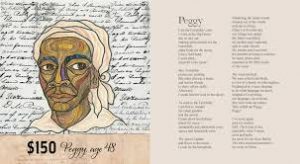
 1619 marks the year that the institution of slavery was first established in the American colonies. Virginia became the first state to adopt this practice, however it quickly spread throughout the rest of the colonies. By 1641, slaves were deemed property, and slavery was legalized. King Charles the Second, who was England’s king at the time, established the Royal African Company in 1660. This company was used to transport “black gold,” or African slaves, from Africa to America as a way to profit off this inhumane practice.
1619 marks the year that the institution of slavery was first established in the American colonies. Virginia became the first state to adopt this practice, however it quickly spread throughout the rest of the colonies. By 1641, slaves were deemed property, and slavery was legalized. King Charles the Second, who was England’s king at the time, established the Royal African Company in 1660. This company was used to transport “black gold,” or African slaves, from Africa to America as a way to profit off this inhumane practice.
Landowners who owned successful crop producing plantations were some of the ones who experienced the most profit from this institution. Similarly they were also some of the biggest advocates of it. Slavery boosted the production of profitable crops like tobacco and cotton, and played a large role in helping America’s economy grow immensely during this period.
Contrarily to the plantation owners, there were a large group of people not directly affected by the profits of the trade that were plagued with the guilt from the morality of this practice. They struggled with the idea of abolishing it or denouncing it due to the huge benefits it produced for production and the economy in general.
It wasn’t until 1793 that the Fugitive Slave Act was put into effect, which forced the government and residents of the American states to aid in the capture and return of runaway slaves. This was a direct result of a series of slave results that occurred throughout the south. This act was supposed to apply to both the free and slave states, however many free states refused to comply with such a request that went against their morals. This act was a large reason that led to the implementation of the underground railroad.
Many of the free states allowed the function of the underground railroad, in direct rebuttal to the laws put in place by the southern states. The Underground Railroad served as a resistance of slaves who utilized train terminology to escape the persecution faced in the southern states. Guides on the underground railroad were referred to as conductors, while hideouts were called way stations.
Artworks from 15 books regarding this history and information are on display in Telling A People’s Story.
Ain’t Nobody a Stranger to Me. Written by Ann Grifalconi. Illustrated by Jerry Pinkney. Jump at the Sun Books, 2007.
Dear Benjamin Banneker. Written by Andrea Davis Pinkney. Illustrated by Brian Pinkney. Harcourt Brace & Co., 1994.
Freedom in Congo Square. Written by Carole Boston Weatherford. Illustrated by R. Gregory Christie. Little Bee Books/Bonnier, 2016.
Freedom Over Me: Eleven Slaves, Their Lives and Dreams Brought to Life. Written and illustrated by Ashley Bryan. Atheneum, 2016.
From Slave Ship to Freedom Road. Written by Julius Lester. Illustrated by Rod Brown. Published by Dial Books, 1998.
Henry’s Freedom Box: A True Story from the Underground Railroad. Written by Ellen Levine. Illustrated by Kadir Nelson. Published by Scholastic Press, 2007.
In the Hollow of Your Hand: Slave Lullabies. Written by Alice McGill. Illustrated by Michael Cummings. Houghton Mifflin, 1999.
Maya Angelou. Written by Maya Angelou. Edited by Edwin Graves Wilson. (Poetry for Young People). Illustrated by Jerome Lagarrigue. Sterling, 2007.
Moses: When Harriet Tubman Led Her People to Freedom. Written by Carole Boston Weatherford. Illustrated by Kadir Nelson. Hyperion, 2006.
The Old African. Written by Julius Lester. Illustrated by Jerry Pinkney. Published by Dial Books, 2005.
Our Children Can Soar: A Celebration of Rosa, Barack, and the Pioneers of Change. Written by Michelle Cook. Illustrations by Cozbi Cabrera, et al. Bloomsbury, 2009.
The People Could Fly: American Black Folktales. Written by Virginia Hamilton. Illustrated by Leo and Diane Dillon. Alfred A. Knopf, 2004
Poet: The Remarkable Story of George Moses Horton. Written and illustrated by Don Tate. Published by Peachtree Publishers, 2015.
Sojourner Truth’s Step-Stomp Stride. Written by Andrea Davis Pinkney. Illustrated by Brian Pinkney. Jump at the Sun Books, 2009.
Sweet Clara and the Freedom Quilt. Written by Deborah Hopkinson. Illustrated by James Ransome. Alfred A. Knopf, 1995.

